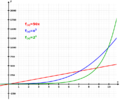Template:Selected anniversaries/January 28: Difference between revisions
Jump to navigation
Jump to search
No edit summary |
No edit summary |
||
| Line 3: | Line 3: | ||
File:Exponential-growth-diagram.svg|link=Crimes against mathematical constants|1925: New type of [[Crimes against mathematical constants|math crime]] exploits victims of [[Scrimshaw abuse]]. | File:Exponential-growth-diagram.svg|link=Crimes against mathematical constants|1925: New type of [[Crimes against mathematical constants|math crime]] exploits victims of [[Scrimshaw abuse]]. | ||
File:Hilbert_curve.gif|link=Hilbert Curve (nonfiction)|1927: [[Hilbert curve (nonfiction)|Hilbert curve]] gives lecture on [[crimes against mathematical constants]]. | File:Hilbert_curve.gif|link=Hilbert Curve (nonfiction)|1927: [[Hilbert curve (nonfiction)|Hilbert curve]] gives lecture on [[crimes against mathematical constants]]. | ||
File:George Plimpton 1993.jpg|link=George Plimpton (nonfiction)|2003: [[George Plimpton (nonfiction)|George Plimpton]] publishes first in prize-winning series of articles on [[Capacitor plague (nonfiction)|capacitor plague]]. | |||
</gallery> | </gallery> | ||
Revision as of 20:05, 29 November 2016
1921: Scrimshaw abuse correlates with rise in crimes against mathematical constants.
1925: New type of math crime exploits victims of Scrimshaw abuse.
1927: Hilbert curve gives lecture on crimes against mathematical constants.
2003: George Plimpton publishes first in prize-winning series of articles on capacitor plague.



